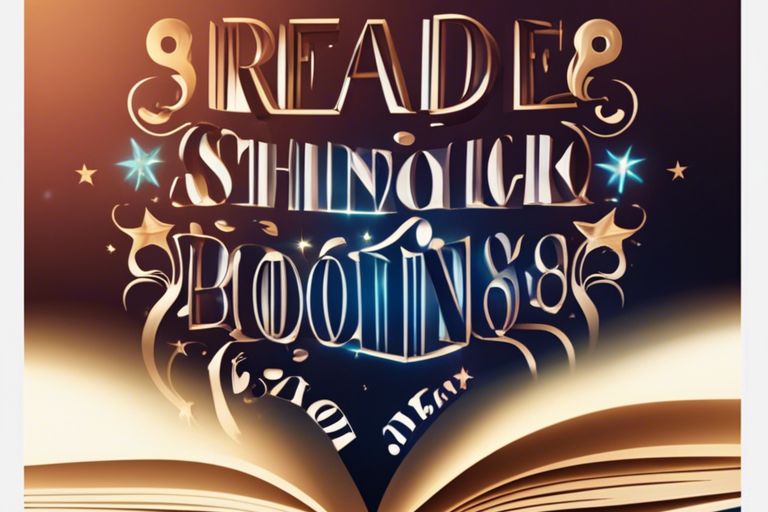Phonics, a method of teaching reading and writing by correlating sounds with letters or groups of letters, has proven to be a powerful tool in transforming struggling readers into confident, skilled individuals. In this blog post, we will explore some inspiring success stories that showcase the remarkable impact phonics instruction can have on individuals who have faced challenges in mastering literacy. From improved decoding skills to increased reading fluency, these stories highlight the positive outcomes that can be achieved when phonics is effectively implemented in educational settings. Join us as we examine into these transformative journeys and celebrate the triumphs of those who have overcome reading difficulties through the power of phonics.
Key Takeaways:
- Phonics instruction is effective: Introducing phonics to struggling readers has shown to significantly improve their reading skills.
- Individualised approach: Tailoring phonics instruction to each student’s needs can lead to greater success in reading development.
- Early intervention is key: Starting phonics instruction at an early age can prevent reading difficulties from escalating.
- Improved confidence: Successful phonics instruction can boost a struggling reader’s confidence and motivation to read.
- Parental involvement is crucial: Encouraging parents to support phonics practice at home can reinforce learning and progress.
Fundamentals of Phonics Instruction
Key Phonics Principles
Key phonics principles form the foundation of successful phonics instruction. Understanding the relationship between letters and sounds, the importance of phonemic awareness, and the significance of blending and segmenting sounds are imperative for teaching children how to read and spell effectively.
Effective Teaching Strategies
Effective teaching strategies in phonics instruction involve a multisensory approach, where students engage with auditory, visual, and kinesthetic activities to reinforce their learning. Explicit and systematic instruction, differentiation based on students’ abilities, and regular practice with decodable texts are key components of effective phonics teaching.
By incorporating a variety of activities that cater to different learning styles, teachers can ensure that all students have the opportunity to develop their phonics skills and become confident readers. Providing immediate feedback, monitoring progress, and adjusting instruction accordingly are also imperative elements of effective teaching strategies in phonics.
Stories of Transformation
Early Childhood Triumphs
Early childhood triumphs in phonics often involve young children who struggled with reading at the start of their academic journey but soon discovered their passion for phonics. Through engaging and interactive activities, these children began to grasp the fundamental building blocks of reading, enabling them to progress with confidence and fluency.
Breakthroughs in Elementary Education
Breakthroughs in elementary education showcase the incredible strides made by struggling readers as they master phonics principles. These students, once hesitant and frustrated, now excel in decoding words and comprehending texts. With dedicated teachers and effective phonics programmes, these children have unlocked the joys of reading and are on a path to academic success.
Many of these breakthroughs stem from a combination of structured phonics lessons, personalised support, and consistent practice. By identifying individual learning needs and providing targeted interventions, educators can help struggling readers build a strong foundation in phonics, ultimately transforming their reading abilities and confidence levels.
Implications for Curriculum Design
Integrating Phonics in the Classroom
When designing a curriculum to improve reading outcomes, it is crucial to integrate phonics instruction effectively in the classroom. By incorporating systematic and explicit phonics teaching methods, educators can provide struggling readers with the foundational skills needed to decode and comprehend text successfully. Phonics should be woven into various aspects of the curriculum to ensure a holistic approach to literacy development.
Supporting Educators for Better Outcomes
To enhance the effectiveness of phonics instruction, it is important to support educators through professional development and resources. Training sessions on evidence-based teaching strategies, access to high-quality instructional materials, and ongoing support and feedback can empower teachers to deliver phonics instruction more confidently and effectively. By investing in educators, schools can ensure better outcomes for all students, particularly those who struggle with reading.
Beyond the Classroom
Involving Parents and Guardians
Engaging parents and guardians in the phonics learning journey is crucial for the success of struggling readers. By providing support, resources, and guidance to parents, educators can create a collaborative environment that reinforces phonics skills outside the classroom. Encouraging parents to read with their children, practise phonics games at home, and celebrate small victories can make a significant impact on a child’s reading progress.
Utilizing Technology and Resources
Technology can be a powerful tool in enhancing phonics instruction for struggling readers. Utilising interactive phonics apps, educational websites, and online resources can provide personalised learning experiences and additional practice opportunities. Teachers can use technology to track students’ progress, tailor lessons to individual needs, and engage students in fun and interactive ways to develop their phonics skills.
Integrating technology and resources into phonics lessons can benefit students who may struggle with traditional teaching methods. By incorporating multimedia elements, interactive games, and engaging content, educators can create a dynamic learning experience that caters to diverse learning styles and keeps students motivated to improve their reading skills.
Phonics Success Stories – Transforming Struggling Readers
These phonics success stories highlight the power of systematic phonics instruction in transforming struggling readers into confident and fluent readers. By focusing on the relationship between sounds and letters, phonics provides struggling readers with the foundational skills needed to decode words and improve their reading comprehension. These success stories serve as a testament to the effectiveness of phonics in addressing reading difficulties and paving the way for literacy success. Through dedicated practice and support, struggling readers can experience remarkable progress and unlock a world of opportunities through the power of phonics.
FAQ
Q: What is Phonics Success Stories – Transforming Struggling Readers?
A: Phonics Success Stories – Transforming Struggling Readers is a programme designed to help struggling readers improve their reading skills through phonics-based instruction.
Q: How does the Phonics Success Stories programme work?
A: The programme uses systematic phonics instruction to teach students how to decode words by recognising the sounds that letters make. This helps improve reading fluency and comprehension.
Q: Who can benefit from the Phonics Success Stories programme?
A: The Phonics Success Stories programme is ideal for struggling readers of all ages, including children and adults who need extra support in developing their reading skills.
Q: What are the key benefits of using Phonics Success Stories?
A: Some key benefits of using Phonics Success Stories include improved reading accuracy, increased reading speed, enhanced spelling skills, and greater confidence in reading and literacy.
Q: How can I get started with Phonics Success Stories – Transforming Struggling Readers?
A: To get started with the programme, you can enrol in a Phonics Success Stories course, purchase the materials online, or work with a qualified phonics tutor who is trained in the programme.












